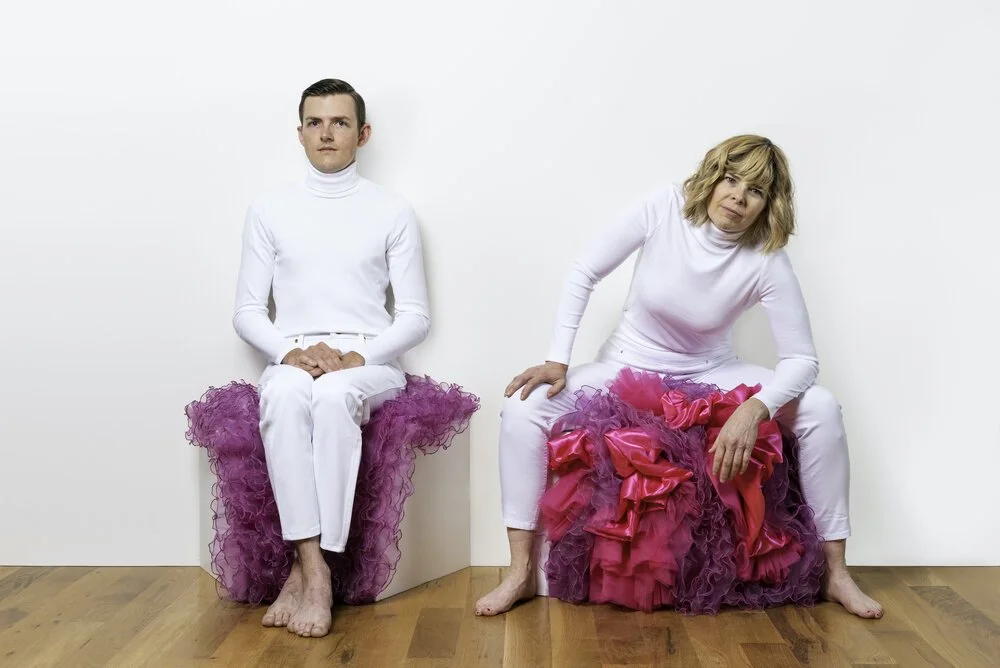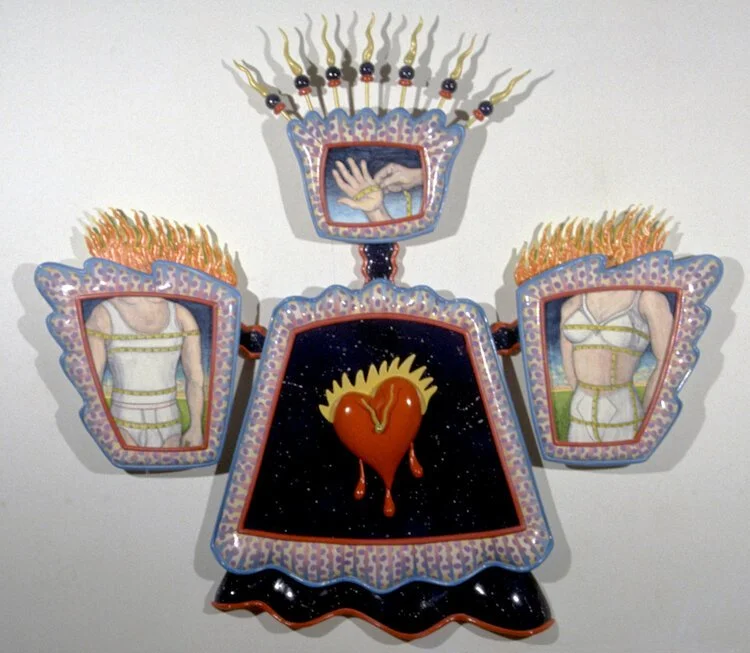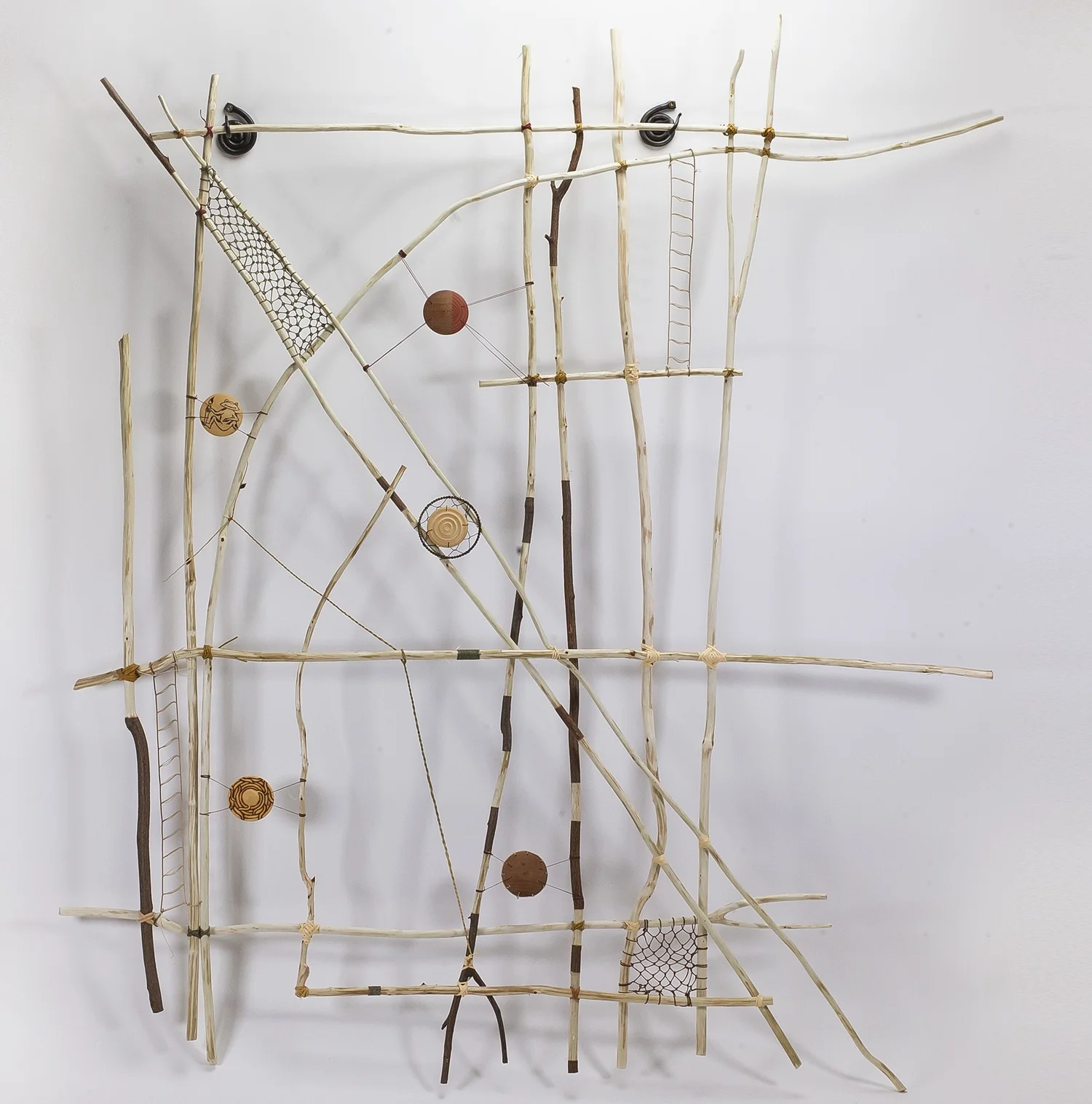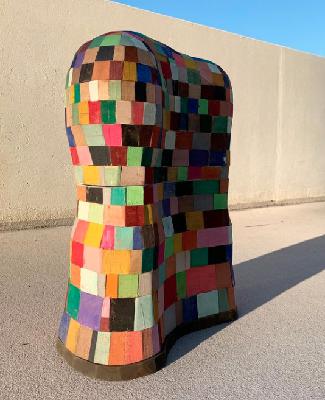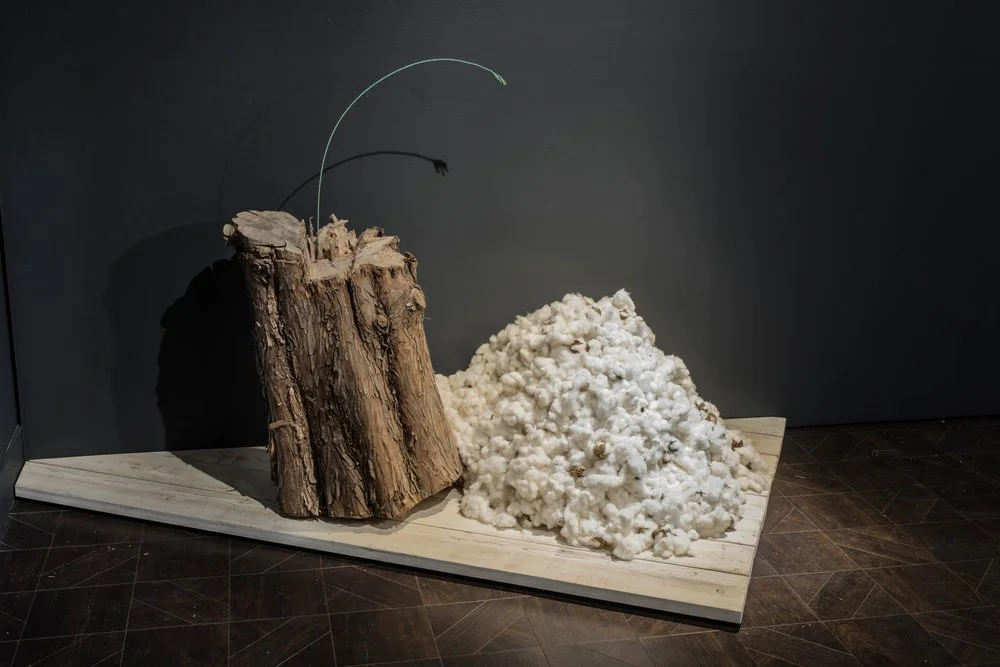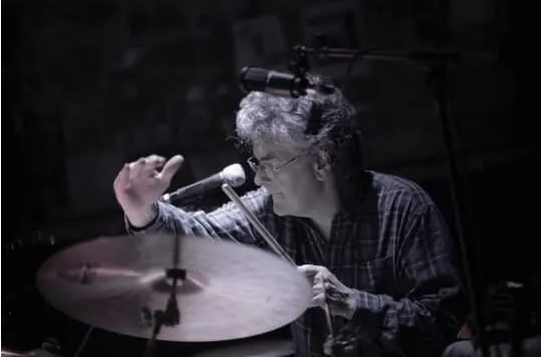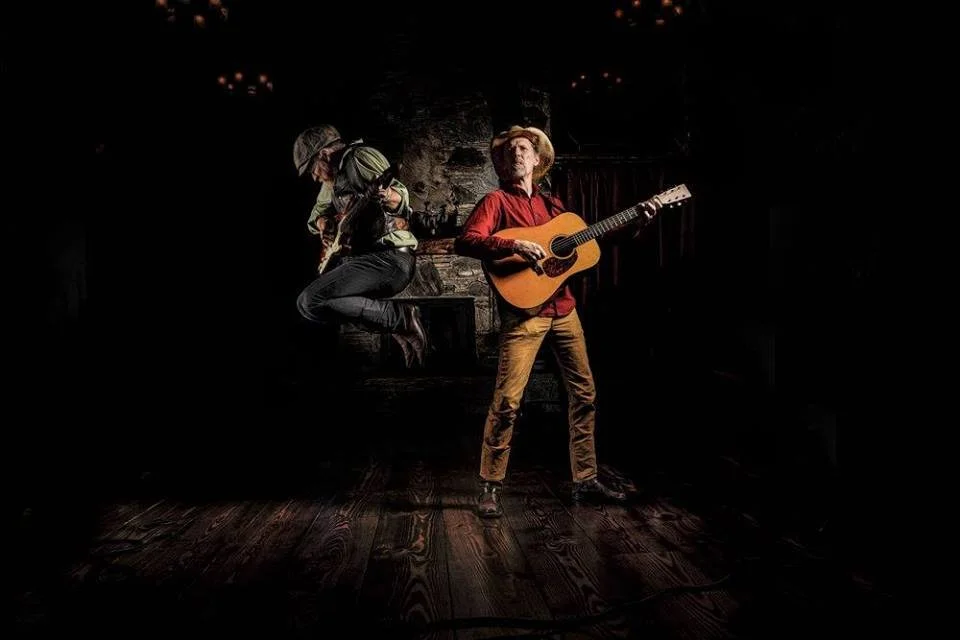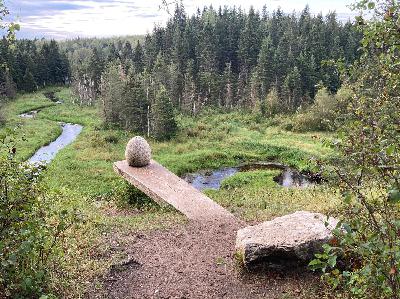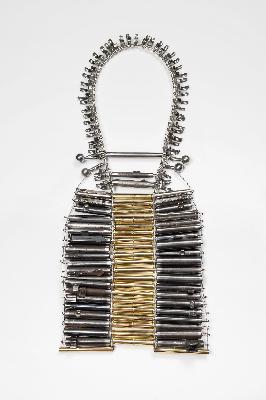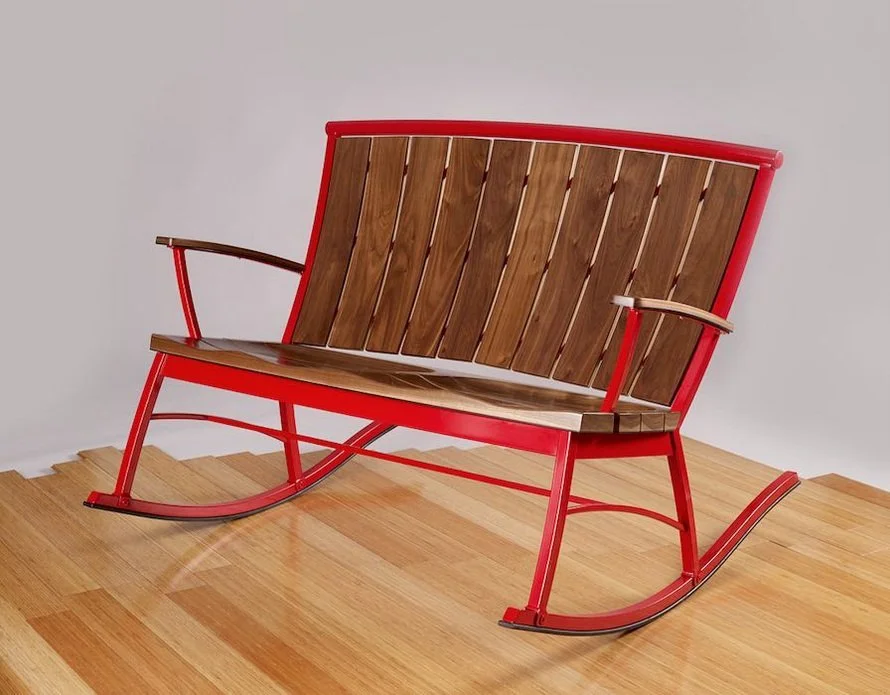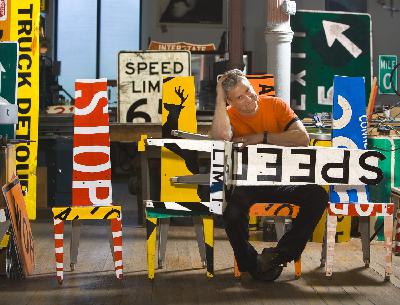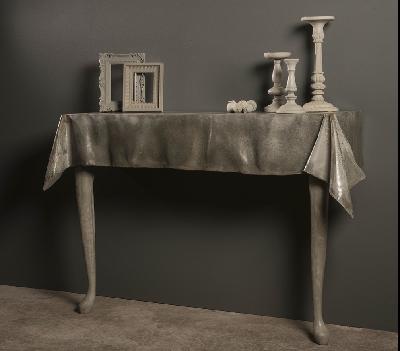Discover Why Make? Podcast
Why Make? Podcast

78 Episodes
Reverse
In Episode 73 of the podcast we talk with Teresa Audet an artist and educator based in Pittsburgh PA. Her journey as an artist took it’s first turn in college when switched from being a painting major to spending all her time in the wood shop. She then spent the 10 years after graduating making cutting boards, furniture, working in a hardware store and working one day week for a wood carver named Cecilia Schiller who creates Automata. Kinetic whimsical wooden characters that move through a system of gears and hand cranks. Graduate school led to an exploration of performance art and participation in the groundbreaking exhibition Making a Seat at the Table- Women Transform Woodworking. And that is not all, please take a listen to our conversation with Teresa Audet
There are four unattributed voices in the podcast that I would also like to mention and they are in order of appearance, Adam John Manley of San Diego CA,Lisa Geertsen Seattle WA, Jason Nemec Charlton NY andM Craig Campbell of Ness Creek SKAgain my many thanks the Emma board of directors for Inviting Why Make to the 2024 event and to the Emma community as whole for being the wonderful supportive generous people they are. Please go to https://www.emmacollaboration.com/ for more information
In Episode 74, my sister Johanna Zorn turns the tables and interviews me about the podcast. This should be a familiar name to those who listen to the credits at the end of our episodes. She has helped edit many of the episodes we have released in the last two years and was in the background making suggestions years before that. She is a veteran of radio and the audio documentary format having worked at WBEZ public radio in Chicago and then founding the Third Coast International Audio Festival, an organization dedicated to audio storytelling. She is now a freelance editor and producer. So take a listen as she tries to get me to answer the question, why I make Why Make?
In this episode of Why make we are going to literally talk about something close home, both my childhood home of Pittsburgh and my mom who was a fiber artist. That is the 2025 Fiberarts International produced by the Pittsburgh Fiber Arts Guild, of which my mom was a longtime member, Contemporary Craft and Brew House Arts. We will talk with two of the artists involved in this years show Akudzwe Elsie Chiwa and Chieko Murasugi
And two long time members of the Pittsburgh Fiber Arts Guild,which has produced this exhibition for over 50 years, Patty Kennedy-Zafred and Risa Nagan.
Take a listen as we weave a tale that for me starts with my mom and ends with learning something about an art form long denigrated as women’s work.
Fully automated, remote controlled fighting tables that compete for ultimate supremacy, seems to be a good place to start any conversation. Especially when that conversation is with artist ,woodworker, educator and humorist Annie Evelyn. From fighting tables we move onto the merely absurd, like what it means to be a conceptional functional furniture maker. Her time as a resident artist at the Penland school of Craft. And the work she produced participating in two ground breaking exhibitions for women craft artist
This is the story of how a seed of an idea sowed years ago becomes a ground breaking exhibition of women chair makers.
The exhibition entitled Seating Assignment happened in March of 2024 at the Sawtooth School for Visual Art in Winston Salem NC. It’s chief instigator was the then artist in residence at Sawtooth Rebecca Juilette-Duex. In this Mind of Maker episode we look at the inspiration for creating this exhibition, learn about the Chair Library at Winston Salem College and talk with Elsa Hoffman one of the artists in the show.
How Do You Measure Your Worth is a metaphorical question Paul Sasso posed in a 1990 sculpture of the same name. Paul passed on to that great measuring tape beyond in March of 2025. So here are some previously unpublished thoughts Paul had on the topic and many more from a conversation we had in 2023.
This episode of Why Make? is brought to you by Haystack Mountain School of Crafts.Thanks to Haystack to becoming our first sponsor and partner. Haystack currently has open spaces in select Square ONE Workshops for beginners and Summer 2025 Workshops! Spaces in workshops and housing are limited, and applications are processed on a rolling, first-come, first-serve basis. Applications for these open spots will be open the public starting Wednesday, March 26. To see workshop details and to apply, visit haystack-man.org or go to haystack-mtn.org/summer-workshops-details#workshops-how-to-applyOn this episode of Why make we continue our conversations from the 2024 Emma International Collaboration in Big River, Saskatchewan This time Miranda Jones. Miranda is primarily known in the art world for her paintings of animals but she is so much more than that. I saw her mostly in the metal fabrication area with plasma torch in hand but she could also be found in Tiny Shiny the jewelry workshop as well as the painting area. Miranda is a longtime participant in the Emma Collaboration and also sat on the Emma board, so a great person to talk to to get the length and breath of this hard to describe event. Here is my conversation with Miranda, we start with a silly reference to her honorary citizenship from New Zealand I refer to as her Kiwiness. Miranda is in fact a Canadian citizen and resides in Saskatoon but was originally from Australia.
In this episode the last episode of 2024 a special treat, the first of our many recorded interviews from the Emma International Collaboration which took place in August of 2024. This conversation is with Michael Hosulak the brainchild behind Emma though he takes no credit for being founder. We talk about two of the many pieces Michael was involved in making during Emma and also talk about the beauty that is “cocktail hour” and the “junk pile”. Sit back and listen as we contemplate the possibilities of “What If”.
In this episode, we are returning to our “Mind of a Maker” mini series with furniture maker and sculptor Ellie Richards
This story starts with an idea that was brewing for years before Ellie began making the piece we talk about in this episode, and that idea was a fascination with the fantasy coffin practice that exists in Ghana. Fantasy coffins, as the word implies, are fantastical, large, hollow, sculptural forms built almost entirely with hand tools that can be just about anything from a jet plane to a tomato… basically trying to capture a person's passions as they pass on and they are, quite simply, then buried in it, a practice far different from our western views on death and burial. She was encouraged to pursue her exploration of fantasy coffins by the artist Eric Adjetey Anang, a descendant of the original Ghanaian coffin makers. Eventually Ellie started to consider how to use these skills to create an object of her own design, and in this edition of Mind of a Maker, Ellie walks us through the process from inspiration to the final construction of her piece titled Basket Casket.
In this episode of why make I talk with sculptor, furniture maker and educator Jack Larimore about how his background in landscape architecture. What led him down the path to discovering a love of design and eventually making furniture. Furthermore how a lack of a formal education In the arts really allowed him to explore sculptural ideas with few preconceived notions. Then we get into a deep dive about in his most recent exhibition called Bonding that was held at Rowan University in the spring of 2024.
On this episode of Why Make we have Jim Roberts a percussionist, producer, artist and educator who resides in Chapel Hill NC. Jim plays the drum set, djembe, congas, and has many recordings under his belt. He has just finished a 17 year teaching stint at Elon University where he taught percussion and directed the Elon World Percussion Ensemble.
Jims journey in percussion dated to his earliest years playing in band class to marching band to drum and bugle core to African music traditional fiddle music and so much more. Please join us for a percussive journey with Jim Roberts
In this episode we introduce the first in our Mind of Maker series inside of the Why Make Podcast. With our guest Steve Fishman.
Steve is a printmaker and a painter in many mediums, as well as being skilled with pen and ink and the mighty pencil. He is also a teacher and someone who really knows how to think about the process of making art. So journey back with me a little bit to May of 2023 and I'm thinking about how to put some new elements in the podcast and I come up with the idea of trying to follow the thought process of creating a specific piece of art. And the name that came to me for that was Mind of a Maker, which I stole directly from the Anthony Bourdain PBS series Mind of a Chef. And I'm also thinking of this as being a hybrid project as well, both a podcast and a short film, because of course after making one film I have mastered the medium. So the first thing I need is a guest slash guinea pig to try out the idea, someone who will not mind if I waste their time and flail around. And that would be my good friend Steve Fishman, who I've spent endless hours talking art and art making. And he was more than a willing victim. I also knew that he had recently completed work on an exhibition of moon inspired paintings and that those were part of a much larger ongoing series of paintings. And as Steve and I are both fond of saying, "Bob's your uncle." I had a subject and the topic for my experiment.
Sit back and listen as Steve regales you with tales of painting the moon
Episode 61 of Why Make? is the conclusion of our conversation with Carrboro, NC musician Jonathan Byrd, who, along with being an award winning song writer is also a story teller, a poet, a photographer, a painter, a teacher and now a student in Physics at North Carolina State University.
Enjoy Part Two of our wide open discussion on a host of topics from song writing to physics with Jonathan Byrd.
On Episode 60 of Why Make? our guest is Jonathan Byrd a Carrboro, NC musician, who, along with being award winning song writer, is also a story teller extraordinaire, a poet, a photographer, a painter, a teacher and now a student in Physics.
Erik has known Jonathan for a long time and has watched his career blossom over the years. After discovering that Jonathan had taken a hiatus from touring to go to school for physics it became evident that it was high time to get him on the podcast to find out more.
Enjoy Part One of a wide open discussion on a host of topics, from song writing to physics, with Jonathan Byrd.
As Why Make prepares for it'e journey to the Emma International Collaboration in Northern Canada. We talk with Emma board member Brian Gladwell to find out about the history of this event and to humbly ask for your help for our travel expenses .
As mentioned in the podcast here is a link to excellent book of images and essays from theImagine Peace Now exhibition https://imaginepeacenow.org/supportus/product/i-m-a-g-i-n-e-peace-now-publication/
On Episode 57 of Why Make? we talk with Brad Reed Nelson, a Glenwood Springs, Colorado woodworker, furniture maker and product designer creating magical pieces made from metal and wood.
Brad, aka BRN, and his better half Ann, run Board By Design, a functional design company making such brightly colored amazingness as Knuckles, The Good Pot, Elefunction, Blokkey, Bling Pong tables and the steadfast Winsorrondack chair.
We talk with Brad about his years in school and learning about life and making with the likes of Wendell Castle, Garry Knox Bennett, Paul Sasso, Sam Maloof and Gail Fredell. Brad also reminds us about the importance and necessity of community, collaboration, listening and communication, fostering relationships and being vulnerable. And how these all pile up to the create the mountain from which every single person is made.
So join us as we lean in and get all twisted up in Brad Reed Nelson’s humble sense of humor and wicked sense of design?!
Episode 56 of Why Make? is a conversation 50 years in the making! Erik sits down sit with his childhood friend, the amazing metalsmith, jeweler, sculptor and teacher Boris Bally. Erik last saw Boris sometime in 1974 when they were 12 years old.
Originally, like Erik, from Pittsburgh, Boris now resides and works in Providence RI. A maker from the early days of his youth, Boris fell in love with the magic of working metal and never looked back. Growing up in a Swiss family he took advantage of an opportunity to do a 1 year apprenticeship in Basil Switzerland in metal smithing after high school. Upon returning to the U.S he enrolled in the Tyler School of Art at Temple University in Philadelphia and finished his degree at Carnegie Mellon University in Pittsburgh.
Always the practical artist Boris has fashioned his career by teaching, doing commission work and designing and producing a number of very successful production items, along with his own more personal work. Join us as we catch on the last 50 years and find out what just what Boris Bally has been making.
We had the privilege of having this conversation with Boris while he was teaching a workshop at the Pocosin Center for the Arts in Columbia, NC in June with Bob Ebendorf our guest on Episode 54. Many thanks to the good folks at Pocosin for allowing us to spend some time on campus.
In Episode 55 of the Why Make? podcast we talk with Mia Hall, a maker, former educator and current executive director of the Penland School of Craft, one of the oldest and most prestigious craft schools in America. After growing up in Sweden Mia moved to northern California at the age of 18 and explored for the next 10 years. When a close friend became a buyer for Pottery Barn that possibility as a career excited Mia and she found a path forward through art school. Eventually enrolling at San Diego State University in the interior design department Mia found her true passion upon discovering the furniture design program where she earned both her undergrad and graduate degrees. Always knowing that she wanted to teach Mia became the first Furniture instructor at the new crafts program at the University of Arkansas at Little Rock. During her time teaching there she also became the director of the program. In 2017 Mia became the executive director of Penland and took on the job she always really wanted to do. Morphing from a worker in wood to a worker in paper, spreadsheets in particular.
From Sweden to the mountains of North Carolina join us as we talk with Mia Hall about her path in the arts and the future of craft education.






